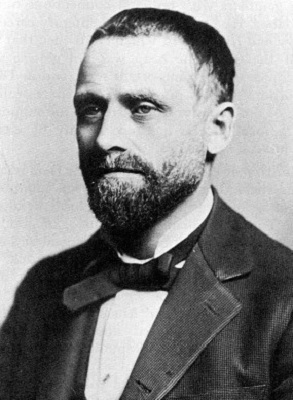How the NATO peoples helped settle Chicago, Part 3
By John R. Schmidt

How the NATO peoples helped settle Chicago, Part 3
By John R. SchmidtToday we conclude our capsule look at how peoples from the 28 NATO countries helped build Chicago.
Belgium—As early as 1854, the government of Belgium identified 83 Belgians as living in the city of Chicago. What there was of a Belgian neighborhood in the city later developed in the few blocks around St. John Berchmans Catholic Church in Logan Square. Since the 1960s that concentration has dispersed.

Germany—Germans were the first ethnic group to come to Chicago in great numbers. In 1850 one-sixth of the city’s population carried the “born in Germany” label. By 1900 a full 25% of Chicagoans were either first- or second-generation German.
They settled on the North Side and up the Lincoln Avenue corridor. They built churches, schools, social halls. They printed books and newspapers, and organized political clubs. They were determined to keep their culture. When one nativist mayor closed the saloons on Sunday, the city’s Germans rioted.
Then came World War I, and a national wave of anti-Germanism. The local Germans became more assimilated. Today, the Dank Haus in Lincoln Square serves as the city’s German-American cultural center. And along with the Irish and the Poles, Germans remain one of Chicago’s largest European ethnic groups. (Hey—those three are my ancestry!)
Hungary—In 1890 there were fewer than 2,000 Hungarians living in Chicago. Within 30 years, that number had swelled to over 70,000. Most of the immigrants took up residence on the South Side, notably in the Burnside neighborhood. There were also Hungarian colonies in East Chicago and Joliet, and in the city around Humboldt Park. Today there is no single concentration of Hungarian settlement.

Lithuania—As anyone who read The Jungle knows, many Chicago Lithuanians lived in the Back of the Yards neighborhood, while working in the Stock Yards itself. The community gradually moved southwest, while struggling to keep its ethnic identity during the years of Soviet incorporation. In the Marquette Park area, a section of 69th Street was renamed Lithuanian Plaza Court. About 80,000 people of Lithuanian background now live in Chicagoland.
Luxembourg—People from Luxembourg were living on the North Side as early as the 1840s. Within a few decades, a major settlement became established along Ridge Avenue, near St. Henry Catholic Church. A Luxembourger community also sprang up in Niles Center (Skokie). Today about 150,000 Luxembourgers live in various parts of the city and suburbs.

Slovakia—Though there have been Slovaks in Chicago for over 150 years, their numbers can’t be determined with much precision, since Slovakia did not become fully independent until 1993. For much of the 20th Century, the major concentration of Slovaks was in the Back of the Yards neighborhood, with another settlement in Joliet. The more recent arrivals have gravitated to Garfield Ridge.
Slovenia—Slovenia was first part of the Austrian-Hungarian Empire, and later became a founding state of Yugoslavia, so tracing Chicago’s Slovenians is not always easy. The earliest local colonies were on the Lower West Side and in Joliet. Community life centered around the Catholic parish, though there was also a large secular element. Today there is a Slovenian Cultural Center in suburban Lemont.

Turkey—Chicago’s Turkish population has always been small and dispersed. The Turkish American Cultural Alliance, located in the Dunning neighborhood, has worked to promote art, history, and Turkish heritage.
United States—Before the Europeans came, the largest Native group in current Chicago was the Potawatomi. The tribes were forced to cede their lands during the 1830s, though a few families remained. Since World War II there has been a significant migration from the reservations to urban areas. Today the American Indian Center serves the 40,000 people from nearly 100 tribes living in the Chicago area.


